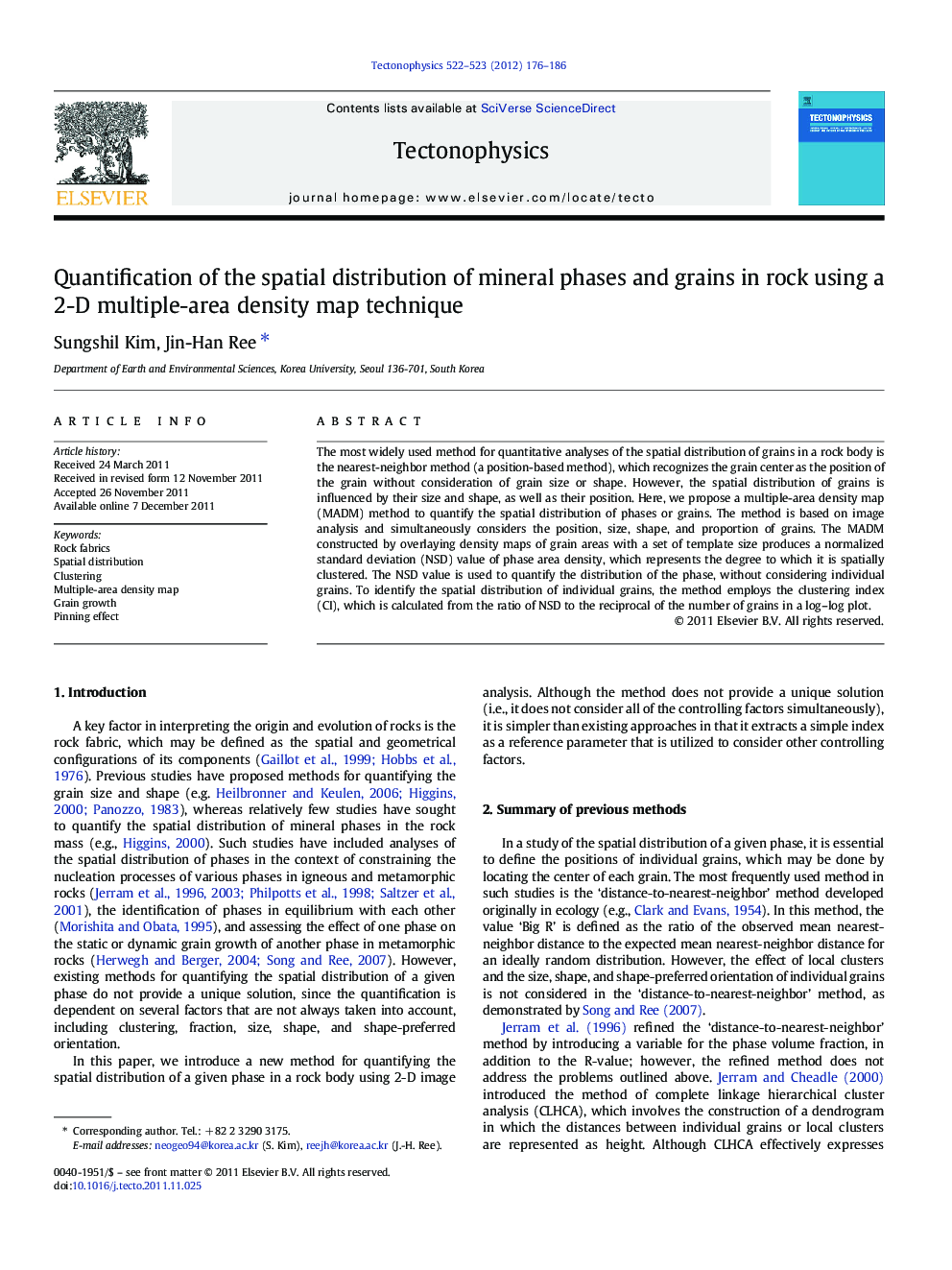| Article ID | Journal | Published Year | Pages | File Type |
|---|---|---|---|---|
| 4692923 | Tectonophysics | 2012 | 11 Pages |
The most widely used method for quantitative analyses of the spatial distribution of grains in a rock body is the nearest-neighbor method (a position-based method), which recognizes the grain center as the position of the grain without consideration of grain size or shape. However, the spatial distribution of grains is influenced by their size and shape, as well as their position. Here, we propose a multiple-area density map (MADM) method to quantify the spatial distribution of phases or grains. The method is based on image analysis and simultaneously considers the position, size, shape, and proportion of grains. The MADM constructed by overlaying density maps of grain areas with a set of template size produces a normalized standard deviation (NSD) value of phase area density, which represents the degree to which it is spatially clustered. The NSD value is used to quantify the distribution of the phase, without considering individual grains. To identify the spatial distribution of individual grains, the method employs the clustering index (CI), which is calculated from the ratio of NSD to the reciprocal of the number of grains in a log–log plot.
► We suggest a new method for the quantification of phase spatial distribution in rock. ► The multiple area density map produces simple indices for phase spatial distribution. ► This method considers position, sizes, fraction and shape of grains.
